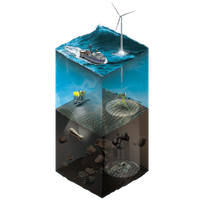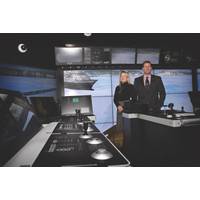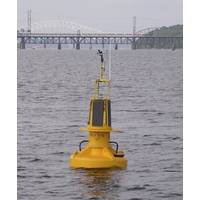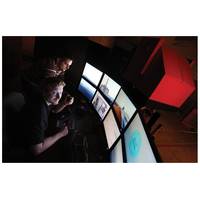
Ocean SuperCluster to Provide $2 Million for GeoScan Wide Area Acoustic Corer
$2 million in funding from Canada’s Ocean Supercluster for the development of wider scanning capability and increased efficiency called GeoScan.The new $3.4 million project will run through to March 2023 and will see PanGeo work with Cellula Robotics of British Columbia and the Marine Institute of Memorial University of Newfoundland to reconfigure the Acoustic Corer 3D technology to allow for a wider area scan and the ability to image geohazards to depths greater than 30 meters sub-seabed. In addition to providing wider area scans, PanGeo will incorporate new Artificial Intelligence (AI) processing

Station-Keeping In Ice
;both in the development of an ice model and the visualization of mathematically based scenarios—are playing key roles in an applied research project underway in St. John’s, Newfoundland and Labrador. The Center for Marine Simulation (CMS) at the Fisheries and Marine Institute of Memorial University in St. John’s, in partnership with the Government of Canada’s National Research Council Ocean, Coastal and River Engineering (NRC OCRE) also in St. John’s and Kongsberg Maritime Simulation Ltd., are conducting a five-year research project to address these issues
Marine Institute Maps Atlantic Sea Bed
; Marine Institute geophysicist Tommy Furey said, outlining the details of the three-dimensional seabed images gathered during the week-long survey. The team from Marine Institute and Geological Survey of Ireland (INFOMAR -national seabed mapping programme), the Fisheries and Marine Institute of Memorial University of Newfoundland, Canada, the United States' National Oceanic and Atmospheric Administration (NOAA), and the Portuguese Institute for Sea and Atmosphere (IPMA), used the latest multi-beam echo sounder technology on the Celtic Explorer to create high resolution images of dramatic seabed
Bay of Fundy Weather Buoy Project Launched
The Governments of Canada and New Brunswick and partners have announced funding for the SmartATLANTIC Saint John buoy project to help improve the efficiency, safety and environmental stewardship of marine transportation in the Bay of Fundy. In line with measures already taken to strengthen Canada's tanker safety system, this project will help to further modernize Canada's marine navigation system by providing accurate and real-time meteorological/hydrological data that will be used to produce high-resolution forecasts of weather and sea conditions, and for scientific research. The SmartATLANTIC
IMCA to Hold ROV Training at Oceanology International
of the IMCA Remote Systems & ROV Committee, Steve Ham of The Underwater Centre Fort William speaking on ‘ROV training in a contextual experience environment’, IMCA consultant Bill Evans, speaking on ‘A syllabus framework for ROV training’ and Dwight Howse, Marine Institute of Memorial University and Giorgio de Tomi, University of São Paulo, speaking on ‘Delivery of ROV training in Canada & Brazil - a global vision’. The afternoon will also include discussion of the syllabus framework for ROV training and other topics raised during the presentations

AXYS Deliver Newfoundland Oceanogrphic Buoys
AXYS Technologies Inc. deliver 8 oceanographic buoys to the Fisheries & Marine Institute of Memorial University of Newfoundland (Marine Institute ). The buoys will expand the existing ocean observing network, known as “SmartBay ”, located at Placentia Bay along Newfoundland’s southern coastline. The data provides fishermen, vessel operators, weather forecasters and other stakeholders near real time access to a variety of marine meteorological and oceanographic data. The Marine Institute plans to deploy the buoys in the spring and summer of 2013, with one 3 Metre buoy replacing

Survival Training & The Virtual World
. This is an impossibility, the way it’s normally done, because the risk of injury is too great to train using real equipment.” Capt. Patterson was speaking in St. John’s in late October at Ocean Innovation’s Extreme Survival conference, co-sponsored by the Marine Institute of Memorial University of Newfoundland and the International Association for Safety and Survival Training. When the Manila Amendments to STCW came into effect in January 2012—the standard for lifeboat training, which had specified the use of real equipment, was expanded to include simulation-based



 February 2024
February 2024





